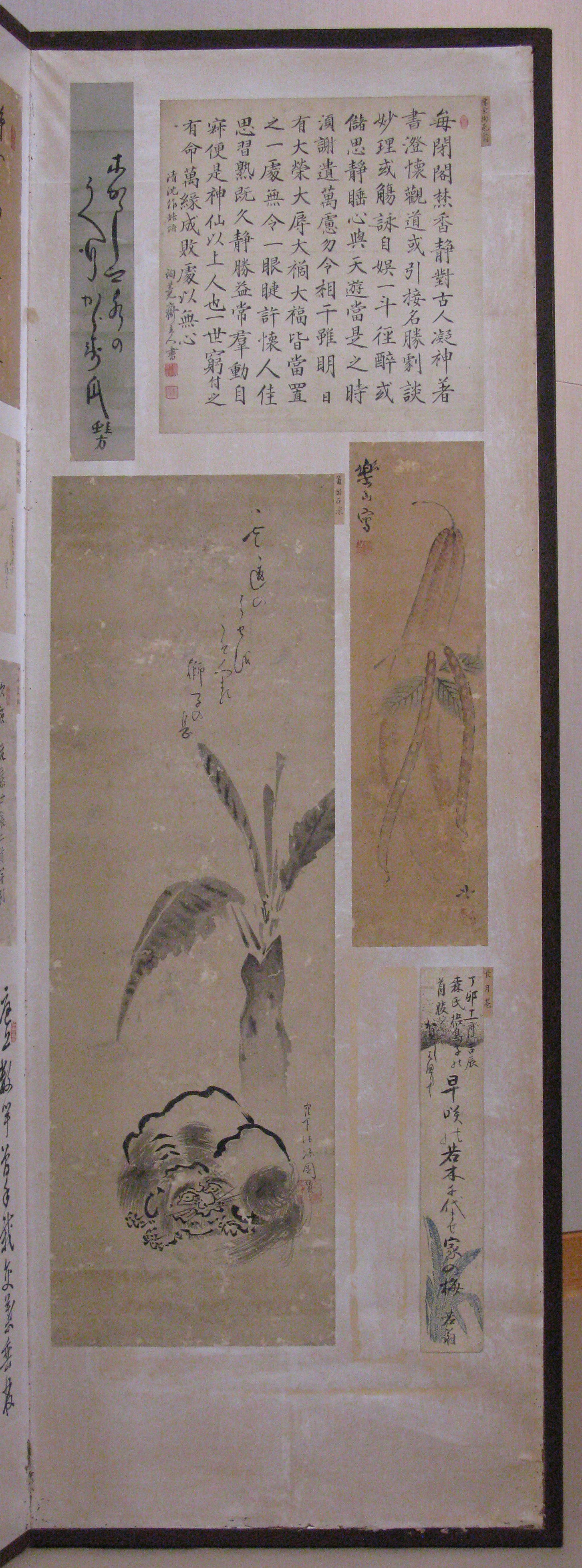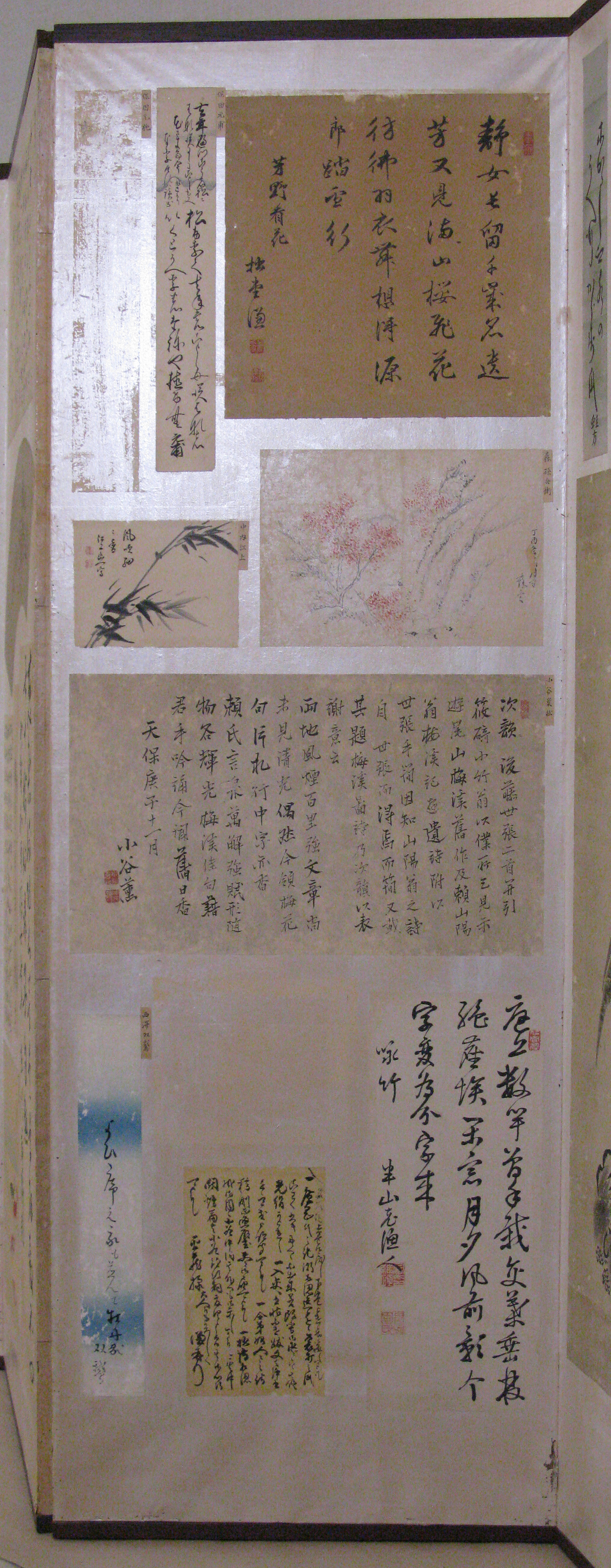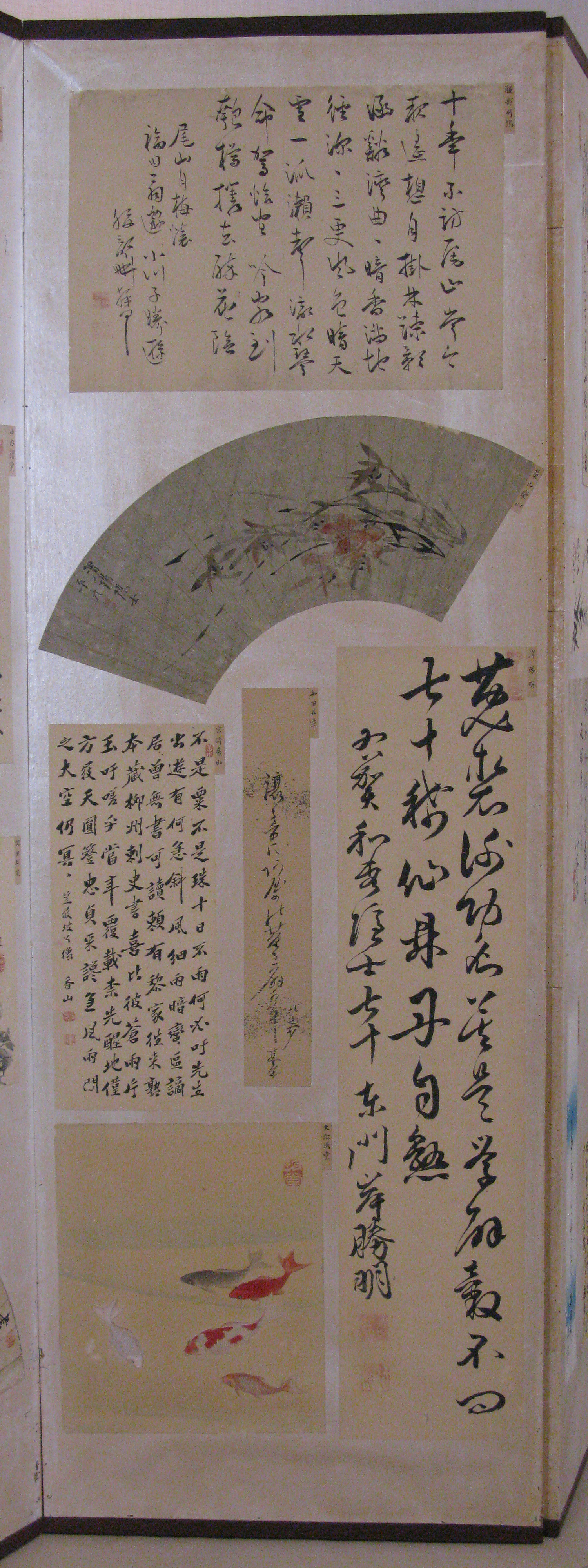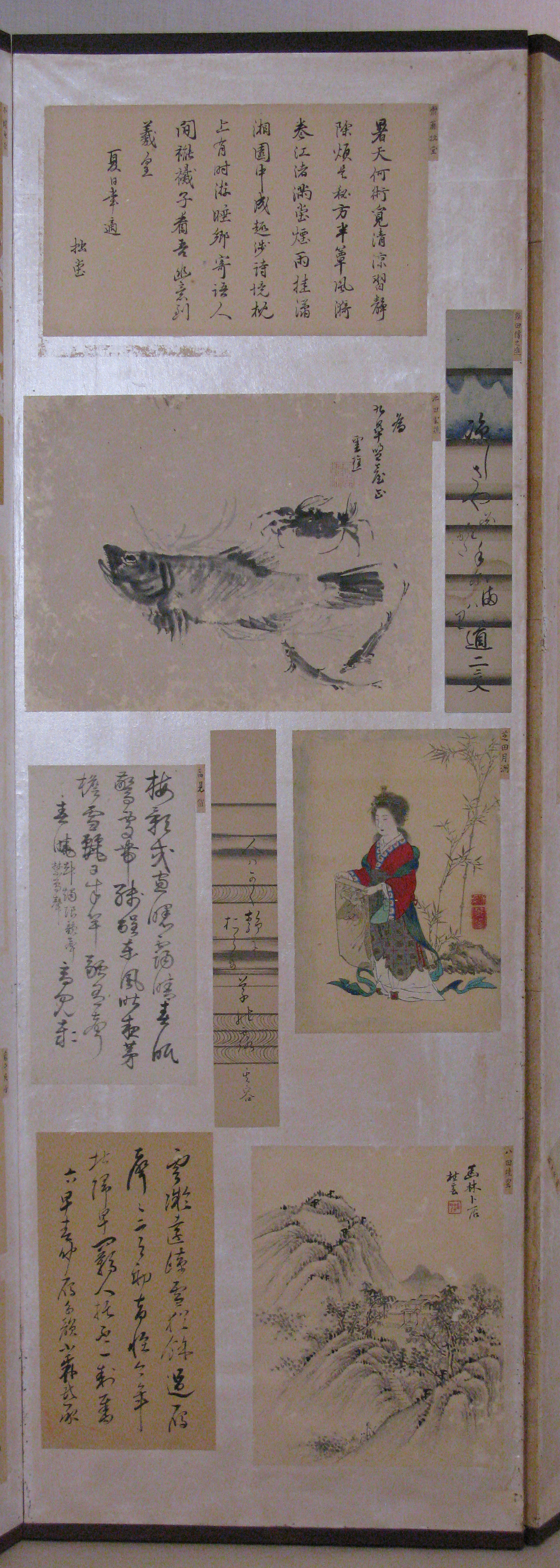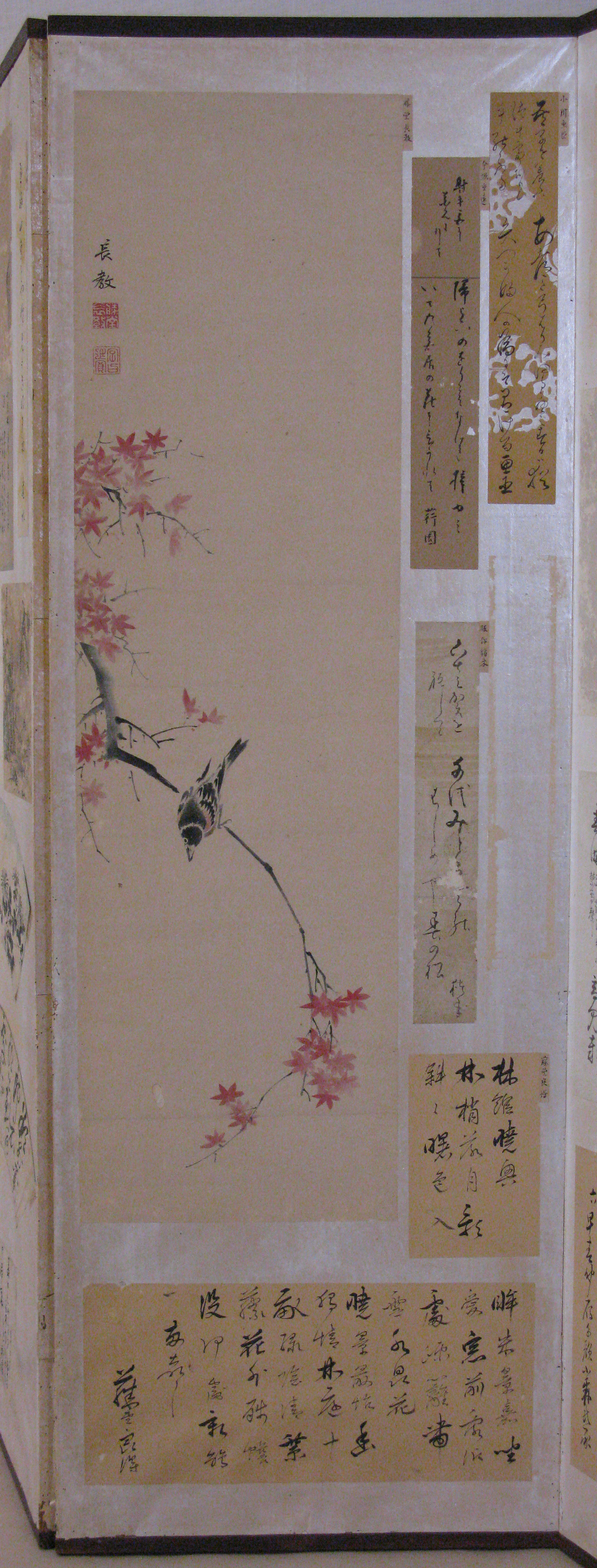Paintings and Calligraphy by Literati of Iga Ueno
Not on view
This eight-panel screen demonstrates how small paintings in various formats, poem cards, and fans with brushed inscriptions could be preserved in premodern Japan. Instead of pasting them into an album or mounting them individually, a collector could attach to a screen tanzaku (vertical poem cards), shikishi (square poem cards), kaishi (larger horizontal poem sheets), fans, and larger paintings and calligraphic inscriptions. Originally there were fifty-nine sheets in various shapes and sizes attached to this screen, but three were subsequently removed. Not only would the original owner of this screen been able to impress visitors with his distinguished circle of literary friends, the overall decorative effect of the “collage screen” (harimaze byōbu) would have been a matter of enjoyment.
Most of the painters and calligraphers represented here were literati of the castle town of Iga Ueno (now part of Ueno city in Mie Prefecture), halfway between Nagoya and Osaka. This is where the great haiku poet Matsuo Bashō was born, so it is an area that prided itself on its literary heritage even into the late Edo period. The works here seem to have been assembled in the early nineteenth century.
Due to rights restrictions, this image cannot be enlarged, viewed at full screen, or downloaded.
This artwork is meant to be viewed from right to left. Scroll left to view more.


